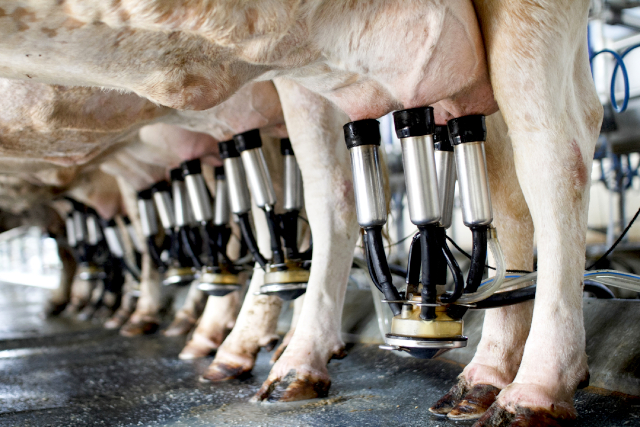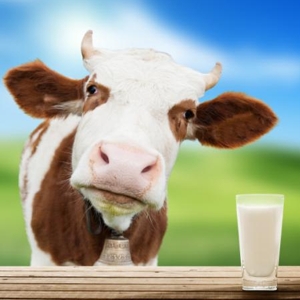We keep hearing about inexorable food price increases. How food price inflation will exceed 10 percent by the end of the year. And producer-suppliers are starting to get defensive about criticism that they’re gouging consumers. But it turns out there are bigger issues behind the increases…
 Milk provides a textbook example of what’s going on with all food prices right now…
Milk provides a textbook example of what’s going on with all food prices right now…
A new detailed examination by CTV News of the causes of food price inflation reveals dark underlying economic conditions that are largely out of the control of growers, ranchers, wholesalers, retailers and other supply chain members. But they’re the ones who are visible to consumers, so they’re the ones who get the grief. That’s too bad. But maybe a quick look at the forces that are squeezing them can help clear the air.
What’s going up this week?
Let’s take milk as a representative example. The Canada Dairy Council (CDC) earlier this week approved a farm gate price increase of $0.02 per litre for milk. It’s the the first time the council has boosted prices twice in a single year.
Major dairy processors and distributors including Lactalis, Saputo and Arla Foods all recently told their customers – wholesalers – to expect a 5 percent increase from them, as the original increase is passed down the supply chain. Retailers and wholesalers can be expected to add their own increases on top of that. That translates to an overall increase of almost 9 percent to the consumer, or as much as $0.15 per litre.
What’s their excuse?
Here’s where the story gets complicated.
Lactsalis, in a letter to its customers, cites what it calls, “significant inflationary costs” as a major driver it its need to charge more. What do those increases entail? Answer: Just about everything that goes into processing packing and shipping a litre of milk.
“Producers have faced increased production costs as well as rising feed, energy and fertilizer costs,” Saputo added.
Weather disasters, the impact of Omicron variants, blockades and significant labour shortages have all put pressure on costs, Anthony Fuchs, vice-president of communications for Food, Health and Consumer Products of Canada told reporters. Also, worldwide increases in the cost of basic food ingredients such as such as wheat, grains and oilseeds have increased 80 percent in the past year. Pulp – the basic material for all paper and cardboard packaging – has gone up as much as 50 percent. And plastic packaging components have gone up more than 40 percent.
It doesn’t take long for it all to add up to a major challenge for families trying to keep sufficient nutritious meals on the table.
Is there an end in sight?
Dalhousie University Food Policy researcher Sylvain Charlebois told CTV, “We’re expecting food inflation to peak between now and the end of September. […] It may actually go north of 10 per cent before things start to calm down.”
Things are even worse in the U.S. The U.S. Bureau of Labor Statistics said yesterday food price increases for food consumed at home hit 10.4 per cent in June, the largest 12-month increase since 1981.
Charlebois says not to expect any relief from higher food prices until the start of next year. If then.
Bottom line…
So take this as some comfort in hard times: We here in Canada aren’t alone in our food price crisis. It’s the whole world.
~ Maggie J.

